How to grow citrus, berries and greens all year long.
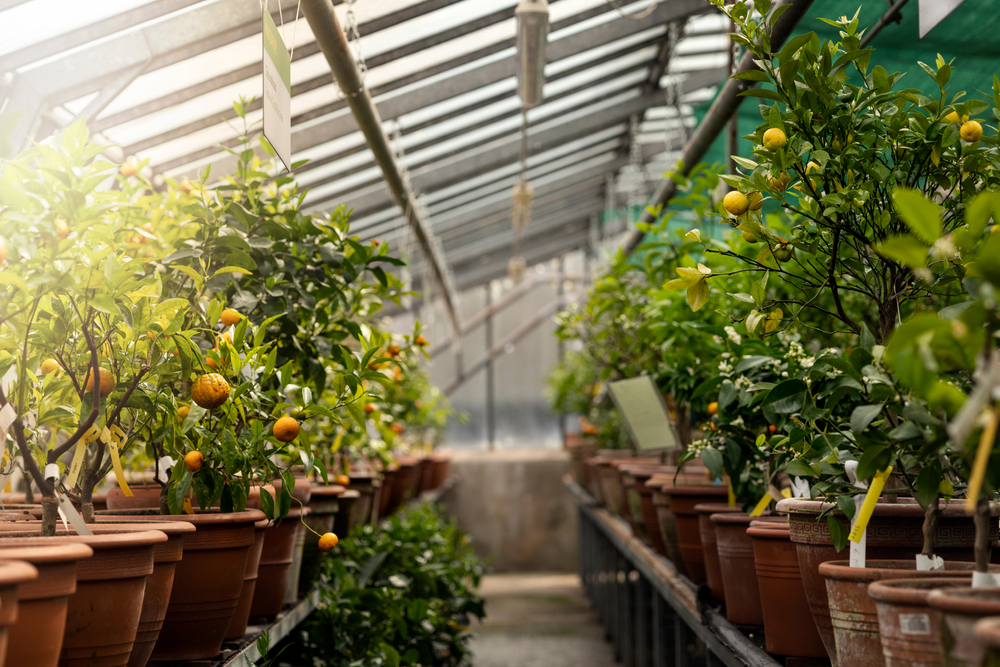
Growing a garden or a few crops in the winter can be especially challenging if you live farther north where pesky frost and below-zero temperatures are a regular occurrence. One tool that can help curb the cold and allow you to grow through the season or simply get a head start on your growing season is a greenhouse. Whether heated or unheated, you’ll have somewhat of a controlled environment and place to shelter your soon-to-be blooming plant babies.
If you have a greenhouse and are feeling uninspired or simply aren’t sure where to start, look no further. We’ve put together a versatile list of crops so that everyone from novice to seasoned growers, growers in mild to cold climates and those in heated to unheated structures can find something that pairs best with their situation.
No need to wait until spring has sprung. Happy growing!
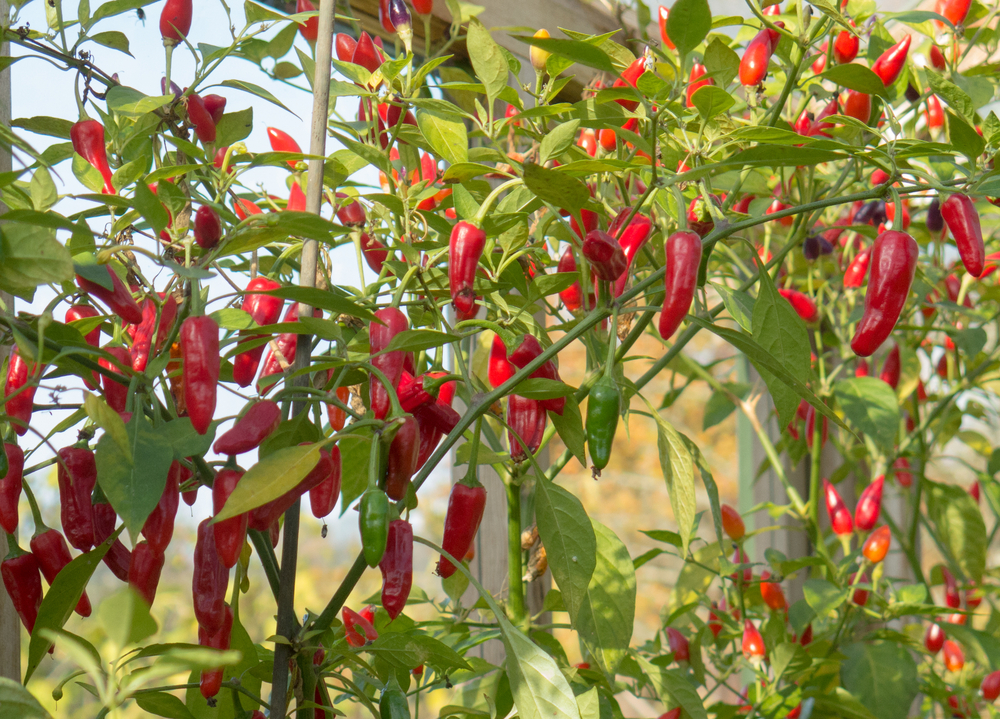
by Peter Turner Photography, Shutterstock.
Chilies
Prized for their spice and pungent taste, chilies are a great greenhouse choice for those who can tolerate a bit of heat. This crop requires regular watering and bright light, and it needs to be kept in an environment with a temperature ranging from 60 to 64 degrees Fahrenheit. Keep the soil constantly moist, but not soaking wet as this can cause rotting. A good rule would be to water every other day or every third day. Do not let the soil dry out completely, especially if your peppers are in pots or containers.
If your greenhouse is unheated, you can start your seeds in a heated propagator or indoors where you have access to sunlight. Alternatively, you can transplant your chilies in your unheated greenhouse two weeks after expected frost dates. It’s best to transplant when you see that leaves have sprouted or 45 days after seeds have been sown in trays. Tomato fertilizers work well for these plants, but compost and well-rotted manure are also good options. Work this into the soil before transplanting.
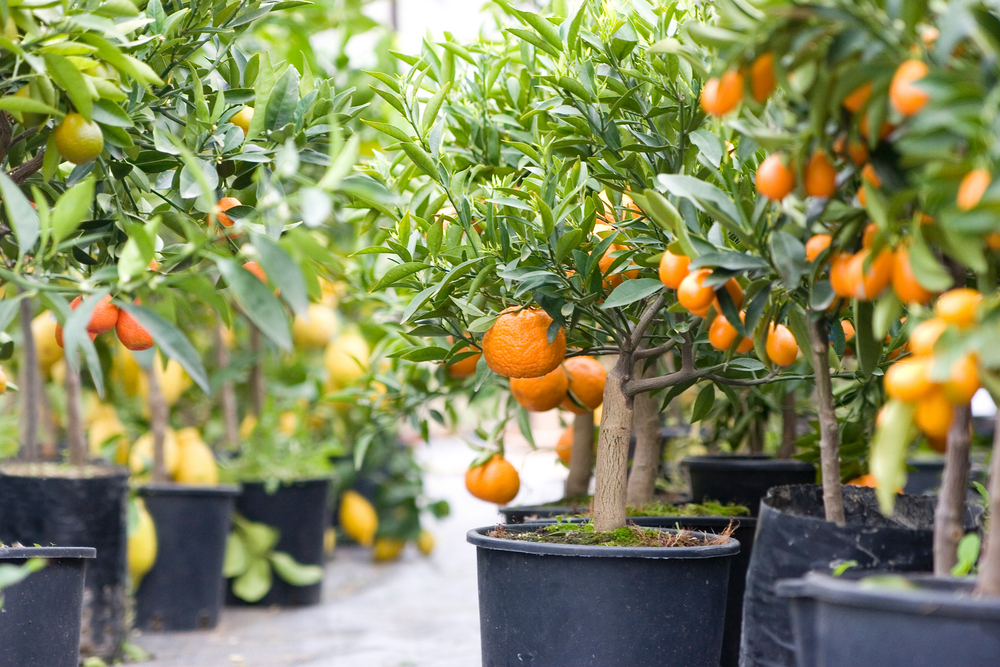
by Anna Kaminska, Shutterstock.
Citrus
Opt for citrus if you want a taste of the tropics amidst the seasonal cold spells. Citrus fruit such as lemons, limes and oranges prefer a temperature range between 70 and 90 degrees Fahrenheit, so having a heat source will be important. Any colder than 70 degrees and the plants will start to drop their leaves. They grow best in loamy or sandy loam soils. You can opt for a potting mix that has peat, perlite and vermiculite and add compost or bark chips to promote drainage. You should make sure the containers in which you’re growing the plants also have drainage holes.
They need six to eight hours of sunlight each day, but avoid placing citrus plants too close to the glass or edge of your greenhouse as they are vulnerable to leaf scalding. Water when the top three inches of the soil feels dry or one to two times a week. If the leaves are wilting and perk up after watering, then you waited too long to water. If the leaves are yellowing and cup-shaped and don’t perk up after watering, this is a sign you have been overwatering.
[RELATED: World’s Largest Rooftop Greenhouse Opens In Quebec]
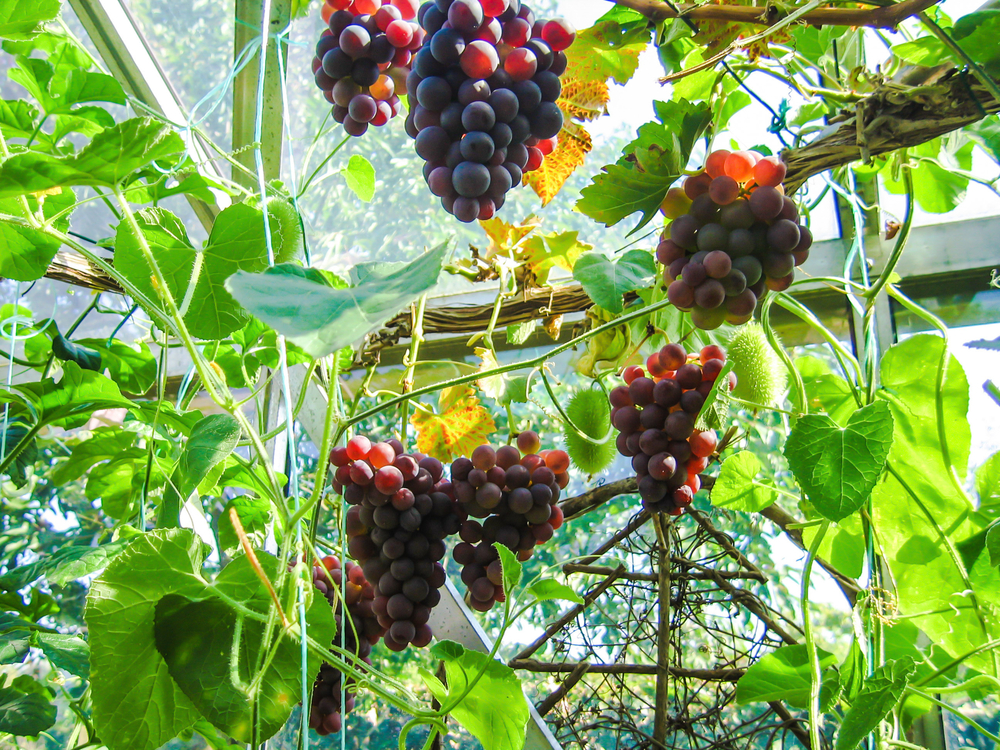
by Luoxi, Shutterstock.
Grapes
Because grapevines have deep roots, they’re going to need pots that are deep enough to support their structure—16 inches is a safe bet. Some varieties that the University of Vermont Extension recommends include Canadice, Early Muscat and Seyval. We also suggest planting your vines a minimum of six inches away from your walls, with at least three feet of spacing between each of the grapevines.
Grapes will tolerate full sunlight in the greenhouse and grow best at 61 degrees Fahrenheit or warmer. They need about seven hours or more of light and a thorough watering once every seven to 10 days. Having well-draining soil will be key to preventing root rot. This can be done by putting small stones or gravel in the bottom of your pot or container, followed by loamy soil rich in organic materials.
It’s important to know that if you make a decision to grow grapes, you’ll be in it for the long haul. These fruits take about three years to produce vine from seed.
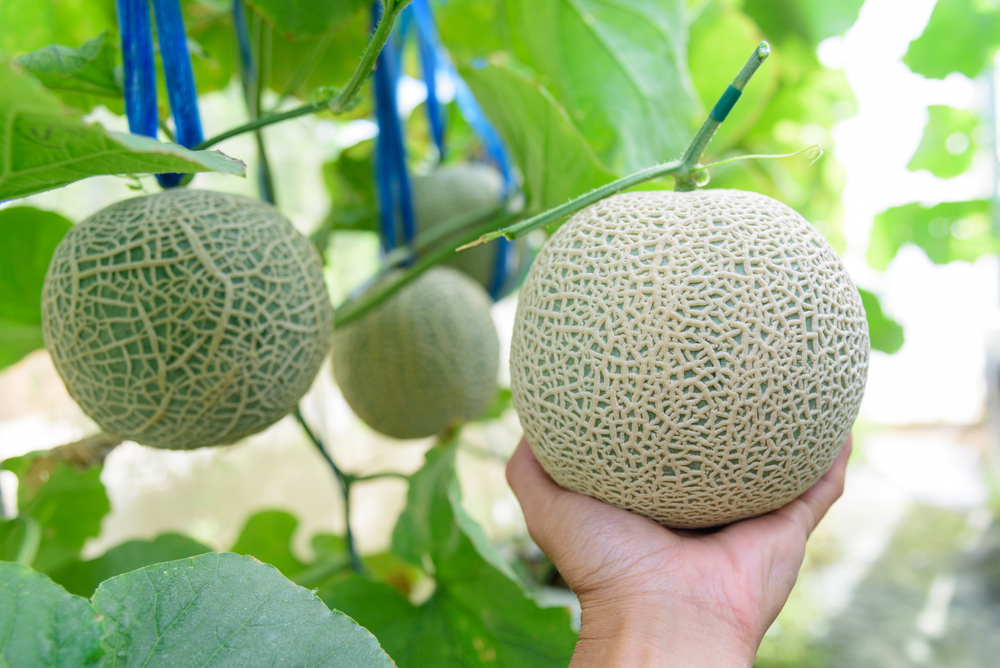
by rukawajung, Shutterstock.
Melons
Melons are a good crop for a heated greenhouse as they thrive in heat and humidity. Ideal greenhouse temperatures are between 59 and 73 degrees Fahrenheit. They perform best in fertile, well-drained soils and you can provide them with one to two inches of water each week.
We suggest you transplant seeds when plants are about five weeks old. Good soil temperatures, which you can check using a soil thermometer, to promote germination is around 68 to 77 degrees Fahrenheit. It’s important to know that melons grow in size rapidly after germination. Planting each seed about 24 inches apart provides sufficient room for growth.
Flowers will typically start to appear within four to eight weeks. Because you’re in a greenhouse, you’ll need to help facilitate pollination. You can do this using a small brush and swiping the inside of each flower to spread pollen around.
[RELATED: How to Turn an Ikea Cabinet Into an Indoor Greenhouse]
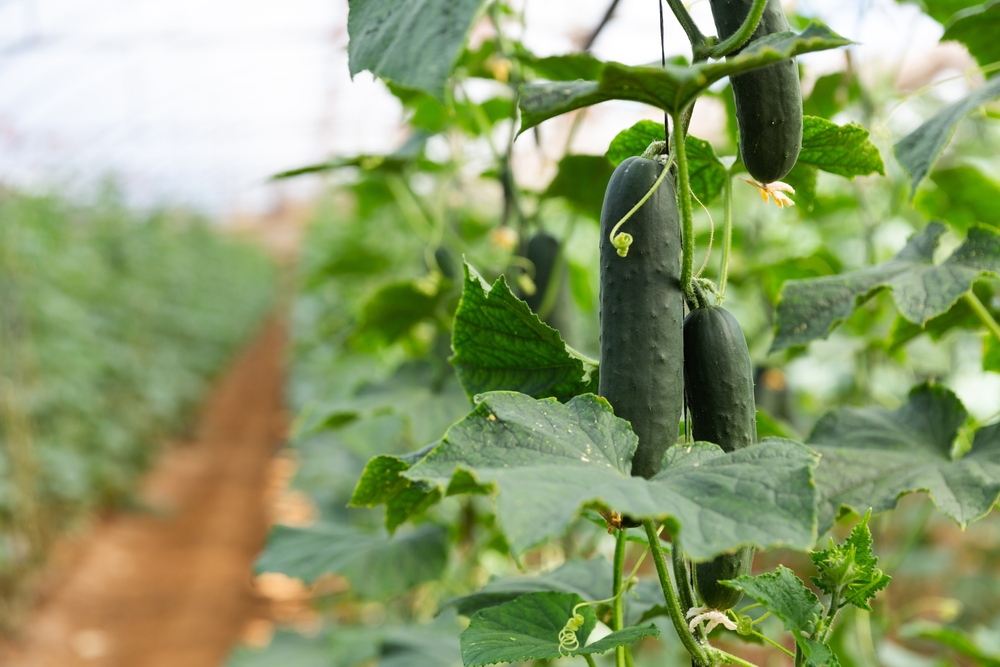
by BearFotos, Shutterstock.
Cucumbers
Cucumbers will grow best at a greenhouse temperature range of 53 to 59 degrees Fahrenheit. For germination to occur, soil temperature should sit around 70 degrees and no cooler than 60 degrees.
These refreshing vegetables require at least six hours of direct sunlight and need regular humidity. If you don’t have a humidifier, you can mist the plant regularly. Planting in the wintertime when days are shorter? We suggest looking for shade-tolerant greenhouse varieties. And for those who aren’t comfortable with facilitating the process of pollination in a greenhouse, it’s a safe bet to look for European greenhouse varieties or varieties that are gynoecious in flowering habit, which will produce fruit without pollination.
The growing season for cucumbers is relatively short. On average, it can last anywhere from 55 to 70 days. Harvest yours when they reach between six and eight inches.
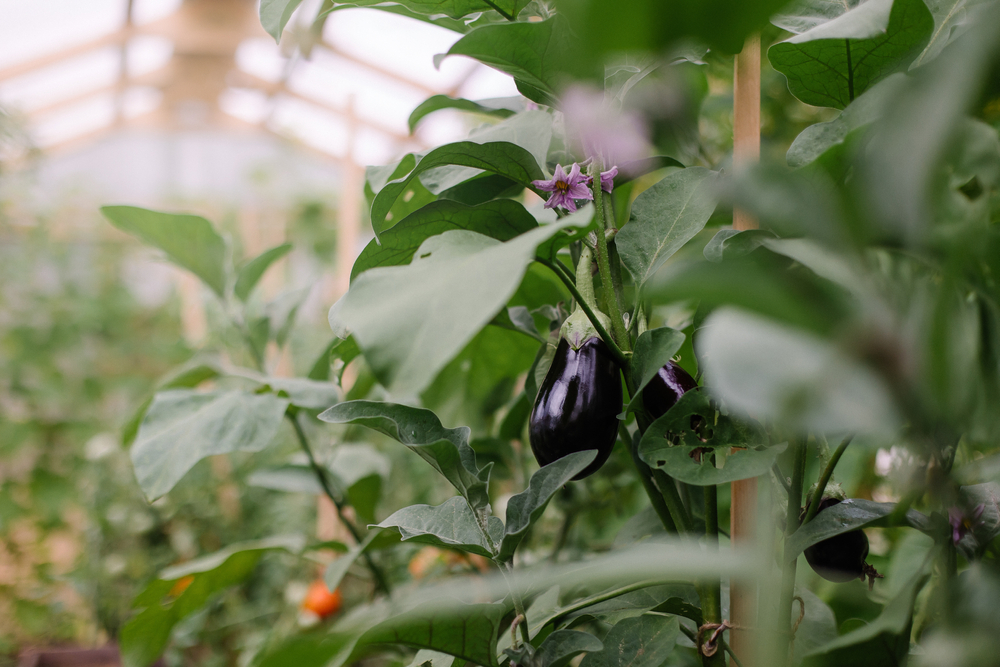
by Da Antipina, Shutterstock.
Eggplant
Eggplants require a nutrient-rich, loamy soil. They need full sun and love the heat. A greenhouse temperature around 69 to 74 degrees Fahrenheit will promote fruit growth. Because eggplants are in the same family as the tomato, tomato food can be used as an alternative to a general liquid fertilizer.
You can propagate these plants by seed. Experts from Cornell University say the best soil temperature for germination is between 80 and 90 degrees Fahrenheit. If you’re working in an unheated greenhouse, it’s best to start your seeds roughly six weeks before your last expected frost date.
When it’s in the greenhouse, you’ll want to mist this plant’s leaves and water it regularly (at least one inch of water each week). A best practice for harvesting is to look at the skin of an eggplant. If it’s shiny, this is when they are at their tastiest. If the skins turn a duller color, this likely means that they likely have some bitterness and are more pithy and spongy in texture.
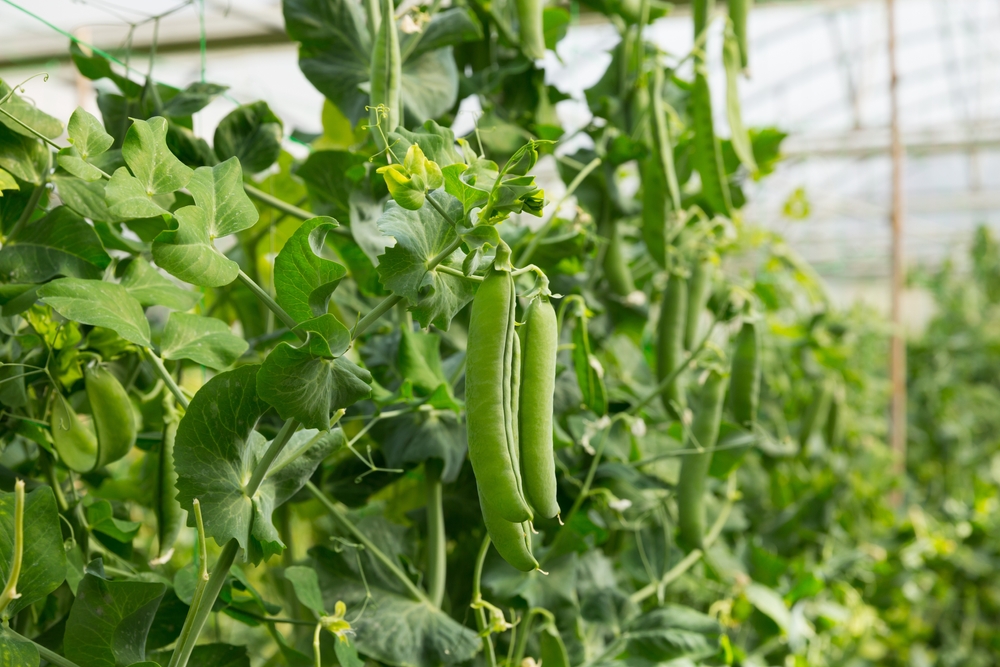
by BearFotos, Shutterstock.
Peas
Your peas will need loamy, well-draining soil. A greenhouse temperature of 73 degrees Fahrenheit is ideal. Seeds can be sown in containers roughly two inches apart to minimize root disturbance. A soil temperature of at least 39 degrees Fahrenheit is necessary for germination.
If you choose to grow snap peas, you should harvest them when you see the pod is full of mature peas. If you opt for snow peas, you can pick them as soon as you see the peas starting to form or five to seven days after flowering. If you’re in an unheated greenhouse and looking for a variety that can withstand colder temperatures, we suggest something like the Meteor pea.
Peas need at least six hours of full daylight. If you’re in a location where days are shortened, you can add an artificial light source positioned roughly two feet above the plants.
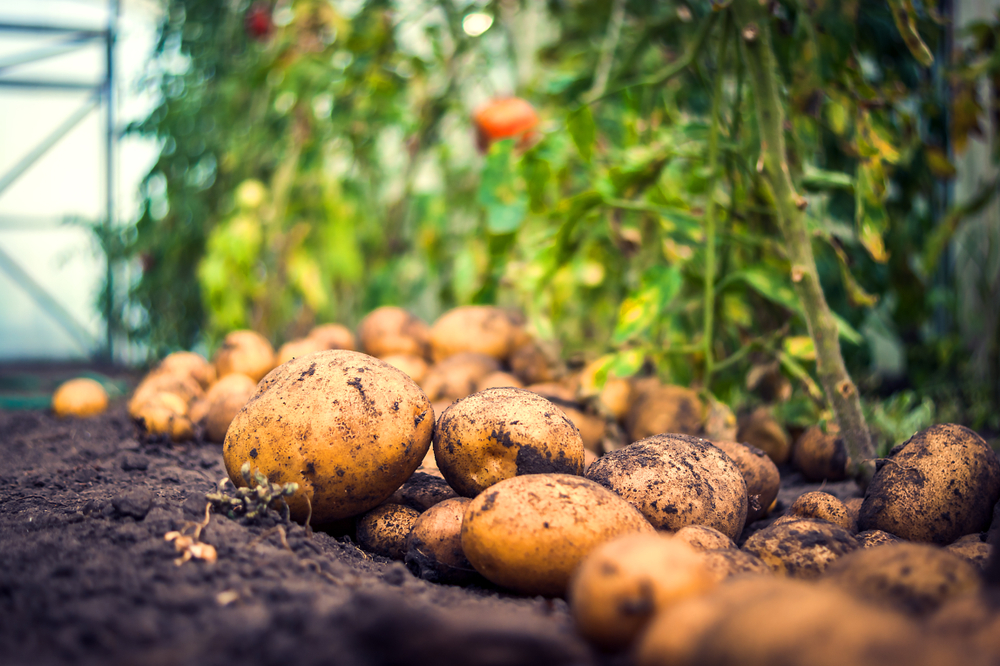
by EugenePut, Shutterstock.
Potatoes
The humble potato is one of America’s most beloved crops. It can also be easily grown in a greenhouse—whether in a raised bed, grow bag or in large containers. When you plant them, make sure the buds are facing upwards and you’ve covered them with about three inches of soil. After about two weeks of planting, you can fertilize with a high-phosphorus mix each week.
Potatoes grow best in full sun and at a temperature of 60 to 70 degrees Fahrenheit, but root growth occurs when soil temperatures are between 50 and 95 degrees. They can survive on about one to two inches of water each week.
[RELATED: The Rise of At-Home Hydroponic Gardens]
Again, if you have less than six hours of sunlight, you might want to think about integrating an artificial light source. In comparison to some of the other tropical crops, the potato will tolerate colder temperatures. If you’re in an unheated greenhouse and temperatures are going to fall below freezing, you can place a frost cover over your greenhouse or use a temporary heat source or heater for a boost.
When flowers start to form on the top of the soil, your potatoes are ready for harvest.
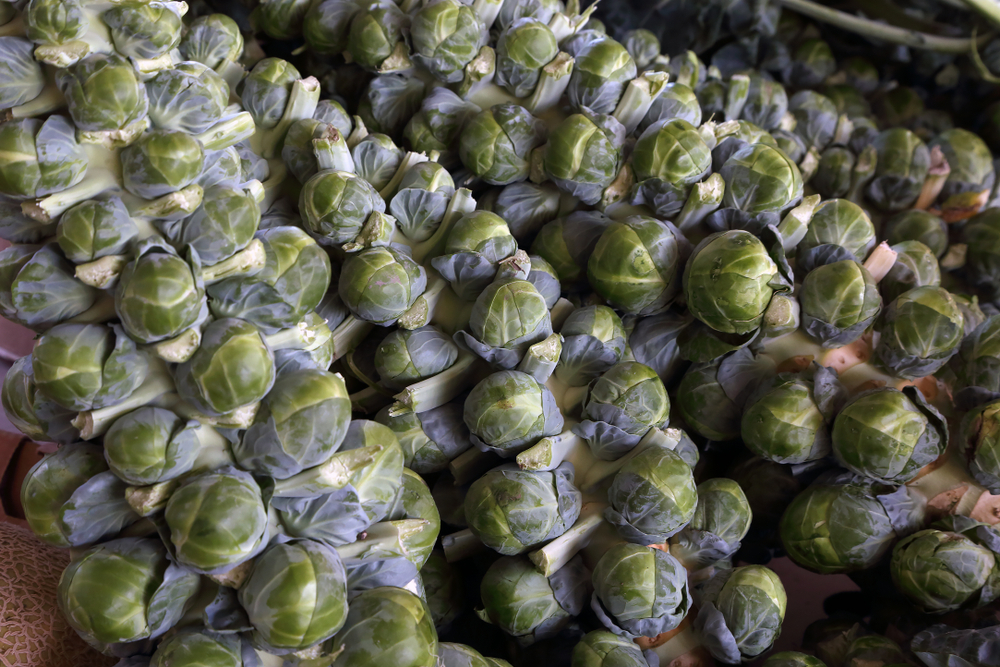
by Barisev Roman, Shutterstock.
Brussels Sprouts
Did you know a single cup of Brussels sprouts has four times the vitamin C content of an orange comparable in size?
These vegetables need to be grown in temperatures between 45 and 75 degrees Fahrenheit. They prefer loamy, fertile, well-draining soil. The more moisture they have, however, the better they will grow. You can water your Brussels sprouts with about two inches of water each week or when the top inch of soil feels dry. They should be fertilized with a high-phosphorus mix when they are first planted and a second dose of nitrogen-rich fertilizer several weeks after.
It’s a cold-weather crop, so it can tolerate chillier temperature periods (as low as 20 degrees Fahrenheit). But if your intention is to grow in a greenhouse before transplanting into your garden, we suggest starting the seeds inside your greenhouse about six weeks before the last date of the spring frost. When you sow seeds, keep them three to four inches apart.
On average, Brussels sprouts take about 80 to 90 days to harvest. When you harvest them, you can either twist off each sprout individually or cut the plant off at the base of the stem.
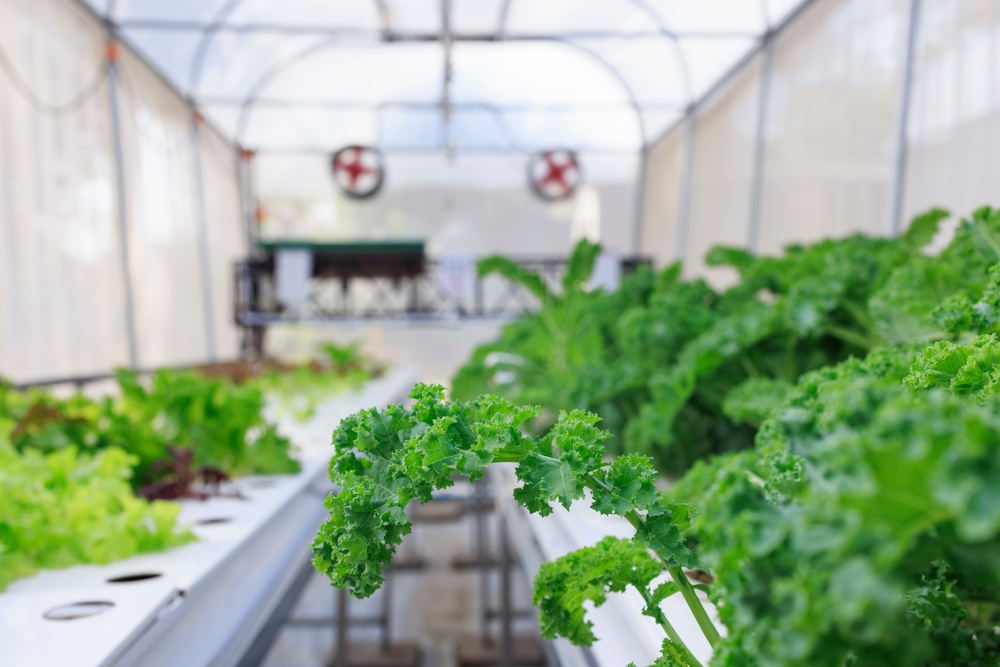
by KAMONRAT, Shutterstock.
Kale
Kale plants grow best in direct sunlight and need sun for about six hours a day. However, it is also a cold-weather crop with a capacity to survive temps as low as 10 degrees Fahrenheit. If you’re looking for a hardy variety that would be able to withstand an unheated structure and exposure to frost, we suggest looking at Siberian varieties.
That said, an optimal temperature range in which to grow them would be 55 to 75 degrees Fahrenheit, with a soil temperature of 60 to 65 degrees for planting. They require roughly one to one-and-a-half inches of water each week and fare best in well-draining soil that’s high in organic matter.
Start your seeds by planting them about a half of an inch to one inch apart. Soil temperatures should be at least 40 degrees Fahrenheit and ideally between 50 and 85 degrees for germination to occur. If you use a seedling tray, you’ll want to transplant into separate containers when your seedlings are about 10 inches tall and have their true leaves. Opt for containers about 12 inches in diameter and anywhere from six to 12 inches deep. If you’re growing multiple plants in a bed or in a larger container, make sure you space them four to 10 inches apart.
Kale is typically ready to harvest in 55 to 75 days.
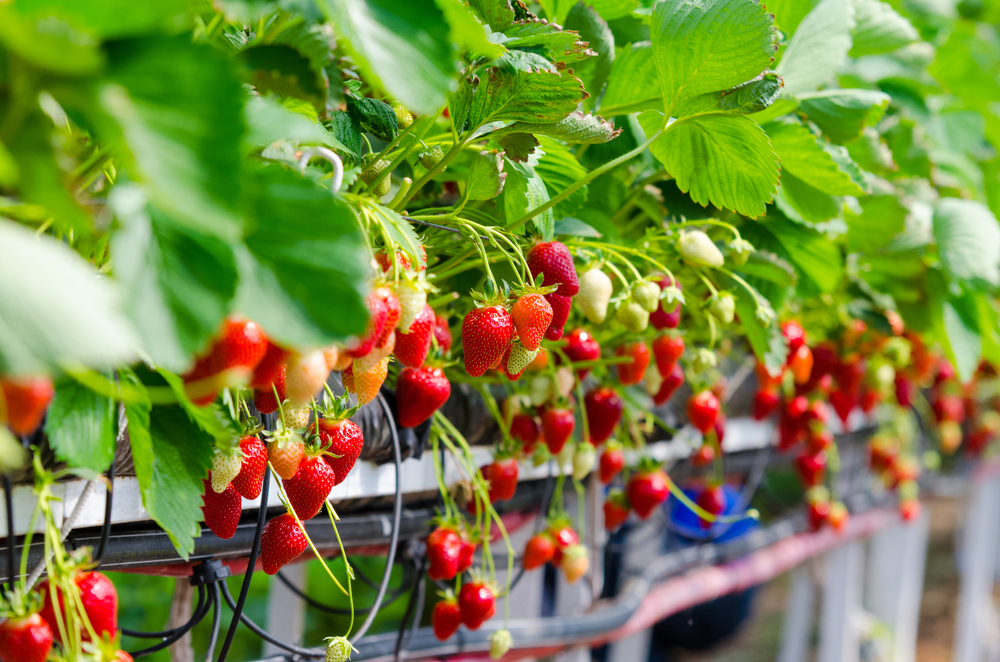
by Taras Garkusha, Shutterstock.
Strawberries
Get your antioxidant fix year round by growing strawberries in a greenhouse. They’re a summer crop, but with the proper infrastructure, you don’t have to wait until then.
Strawberries fare best in greenhouse temperatures between 60 and 77 degrees Fahrenheit, and they need to be grown in well-draining soils, as they’re shallow-rooting plants. If you’re planting in a container or raised bed, look for one that is at least eight inches deep. If you’re using a hanging planter, it should be at least 12 inches deep.
Typically, strawberries need at least six hours of sunlight each day, but some varieties may need up to 12 hours. If this is a winter gardening project, grow lights can ensure it meets these requirements. We also suggest fertilizing your strawberries twice a month with a well-balanced, organic compost.
Strawberry fruits are usually ready about five weeks after the flowers blossom. You can harvest them by picking the ripe fruits every two days.
You missed the tomato and haldi